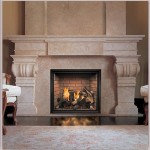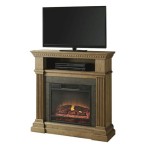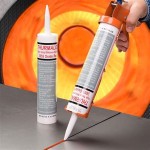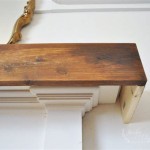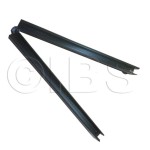Brick Fireplace Cultured Stone: An Aesthetic and Practical Upgrade
The fireplace has long served as a focal point in residential spaces, providing warmth, ambiance, and a gathering place for family and friends. While traditional brick fireplaces offer a classic aesthetic, cultured stone presents a versatile and increasingly popular alternative for enhancing their appearance. This article explores the benefits, types, installation considerations, and maintenance aspects of using cultured stone to upgrade a brick fireplace.
Cultured stone, also known as manufactured stone veneer, is a lightweight alternative to natural stone. It is composed of a mixture of cement, aggregates, and pigments, molded to replicate the look and texture of various natural stone types. Because it is manufactured, cultured stone offers greater consistency in color and texture compared to naturally sourced materials. Its lighter weight significantly reduces the structural support requirements, making it a practical choice for remodeling projects, particularly when adhering it to existing brick fireplaces.
Aesthetic Advantages and Design Versatility
One of the primary reasons homeowners opt for cultured stone is its aesthetic appeal. It offers a wider range of design possibilities than traditional brick. Cultured stone is available in various styles, replicating the look of fieldstone, river rock, ledgestone, and other natural stone formations. This allows homeowners to customize the look of their fireplace to match their interior design aesthetic.
The design flexibility extends beyond just the type of stone. Cultured stone is available in a vast array of colors, from earthy browns and grays to vibrant reds and blacks. This color palette allows for seamless integration with existing room décor or the creation of a striking contrast to enhance the fireplace's visual impact. Furthermore, the texture of cultured stone adds depth and dimension to the fireplace, creating a more visually engaging focal point.
Another advantage of cultured stone is its ability to conceal imperfections in the existing brick fireplace. Over time, brick can become stained, cracked, or chipped, detracting from the overall appearance of the room. Applying cultured stone effectively covers these blemishes, providing a fresh and updated look without the need for extensive brick repair or replacement. The application can create the illusion of a completely new fireplace, modernizing the room's style without the cost and disruption of a full demolition and rebuild.
Practical Considerations and Installation Process
Beyond aesthetics, cultured stone offers several practical benefits. Its lighter weight reduces the load on the existing structure, simplifying the installation process. Unlike natural stone, which often requires specialized equipment and substantial structural reinforcement, cultured stone can typically be installed without significant modifications to the fireplace or surrounding wall.
The installation process typically involves preparing the existing brick surface by cleaning it thoroughly and applying a scratch coat of mortar. This scratch coat provides a suitable bonding surface for the cultured stone. Individual stones are then applied using mortar, carefully arranged to create the desired pattern and aesthetic. Grouting between the stones is optional, depending on the desired look. Some installations prefer a dry-stacked appearance, eliminating the need for grout lines altogether.
The installation process requires careful attention to detail and adherence to manufacturer's instructions. Proper mortar consistency, stone placement, and curing time are crucial for ensuring a durable and aesthetically pleasing result. While some homeowners may choose to undertake the installation themselves, professional installation is often recommended, especially for complex designs or when dealing with challenging fireplace configurations. Professional installers possess the experience and expertise to ensure proper adhesion, alignment, and overall quality of the finished product.
When selecting cultured stone for a fireplace, it is essential to consider its fire resistance. While cultured stone itself is non-combustible, the mortar used for installation should be specifically designed for high-temperature applications. Using the wrong type of mortar can lead to cracking, crumbling, and ultimately, failure of the installation. Always consult with a qualified installer or building materials supplier to ensure that the selected materials are appropriate for fireplace applications.
Cost-Effectiveness and Maintenance
Cultured stone generally offers a more cost-effective alternative to natural stone. The manufacturing process allows for economies of scale, resulting in lower material costs. Furthermore, the reduced weight and simplified installation process can contribute to lower labor costs compared to natural stone installations. While the initial investment may be higher than simply repainting or refinishing the existing brick, the long-term aesthetic and functional benefits of cultured stone can provide excellent value.
Maintenance of cultured stone is relatively straightforward. Regular cleaning with a soft brush and mild detergent is usually sufficient to remove dust and dirt. Pressure washing is generally not recommended, as it can damage the surface of the stone or compromise the mortar joints. In areas prone to staining, such as around the firebox opening, a sealant can be applied to protect the stone and facilitate easier cleaning.
Over time, some degree of weathering or discoloration may occur, particularly in outdoor applications. However, cultured stone is generally more resistant to weathering than natural stone, due to its controlled manufacturing process and consistent composition. If minor repairs are needed, individual stones can typically be replaced without requiring a complete overhaul of the entire installation. Sourcing replacement stones from the original supplier ensures a consistent color and texture match.
The durability of cultured stone also contributes to its long-term cost-effectiveness. Unlike some types of veneer that may require frequent replacement or repair, cultured stone is designed to withstand the rigors of daily use. Its resistance to cracking, chipping, and fading ensures that it will maintain its aesthetic appeal for many years to come. This longevity translates into lower maintenance costs and fewer disruptive repairs over the lifespan of the fireplace.
Enhancing Home Value and Creating a Focal Point
Upgrading a brick fireplace with cultured stone is an investment that can enhance the overall value of a home. A well-designed and properly installed cultured stone fireplace can significantly improve the aesthetic appeal of the living space, creating a more inviting and comfortable atmosphere. This improvement can be particularly appealing to prospective homebuyers, making the home more marketable.
The fireplace often serves as a natural gathering point in a home, and cultured stone can further enhance this function. By creating a visually striking and aesthetically pleasing focal point, cultured stone can draw the eye and create a sense of warmth and sophistication. This can make the fireplace area a more desirable place to relax, entertain, and spend time with family and friends.
The choice of cultured stone style and color can also reflect the homeowner's personal taste and style. Whether opting for a rustic, traditional look or a sleek, modern design, cultured stone allows for a high degree of customization. This ability to personalize the fireplace area can create a stronger sense of ownership and pride in the home, making it a more enjoyable and comfortable place to live.
Furthermore, a well-maintained and aesthetically pleasing fireplace can contribute to a greater sense of overall home value. Potential buyers often perceive a well-cared-for fireplace as an indicator of the overall condition and quality of the home. This positive perception can translate into a higher selling price and a faster sale. Therefore, investing in a cultured stone upgrade for a brick fireplace can be a smart and rewarding decision for homeowners looking to enhance their property's value and appeal.

Stone Veneer Over A Brick Fireplace Updates The Look

How To Cover A Brick Fireplace With Stone

Cultured Stone Fireplaces The Stoners

Cultured Stone Fireplaces The Stoners

The Benefits Of Cultured Stone Pristine Sweeps

Fireplace Makeover Featuring Ledgestone The Cultured Stoners
First Project Cultured Stone Over Painted Brick Fireplace Ceramic Tile Advice Forums John Bridge

How To Install Thin Brick Veneers On Your Fireplace

Cultured Stone Outdoor Fireplace Brick Fireplaces

Coronado Stone S Residential Projects Fireplaces
Related Posts

